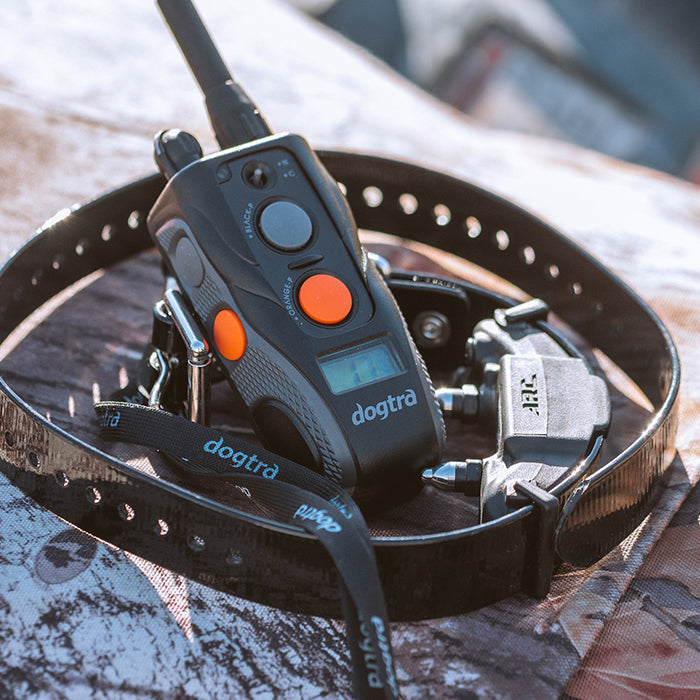5 SURPRISING BENEFITS OF CRATE TRAINING AND HOW TO DO IT RIGHT

As a dog trainer, my goal is to foster a strong bond between pet owners and their furry friends. I'm no stranger to handling behavioral problems, ranging from harmless jumping or barking to more serious biting issues. Unfortunately, I've observed a worrying trend that could contribute to the growing incidence of behavior issues in dogs - a lack of awareness about the benefits of crate training. While addressing problematic behavior is important, prevention through proper training techniques such as crate training can lead to a happier and healthier dog-human relationship.
Why Dog Crate Training is Important
Fewer people are teaching their dogs to tolerate being confined to a crate. I’m sure this trend has something to do with the fact that more people work flexible job schedules and may not see the need to confine their dogs because they don’t have to leave them alone for long. But I also know that the topic of crate training creates conflict and a range of emotions for dog owners.
All too often, people abandon ship on teaching their dog to tolerate a crate because the initial whining causes them to feel guilty or “cruel.” Some dog owners never even attempt to crate-train the dog because they don’t see the necessity of using one.
The truth is, crate training is an essential tool for both puppies and adult dogs. It provides a safe and comfortable place for your furry friend to rest and relax while also helping with house training and preventing destructive behavior. Furthermore, crate training can aid in reducing anxiety and stress in dogs, making them feel secure and less prone to destructive behavior when left alone. With proper training and acclimation, a crate can become a positive and essential part of your dog's life, providing them with a sense of security and comfort, as well as providing you with peace of mind.
5 Benefits of Crate Training
As a responsible dog owner, it is important to ensure that your furry friend learns a few crucial life skills, one of which is crate training. In my experience, crate training has numerous benefits for both you and your pup. Here are just a few of the reasons why:
Housebreaking
Crate training can be invaluable when teaching your dog to become housebroken. Dogs don't like to eliminate in the same area where they sleep, so a crate can help them learn to hold it until you can take them outside to an appropriate toileting area.
Preventing Mischief
A crate can keep your dog out of trouble when they're home alone. This can not only save your valuable possessions from being damaged but also prevent your furry friend from accessing potentially hazardous household items.
Providing a Safe Space
Crates can be an excellent retreat for dogs when things get hectic. They offer a place of solitude for dogs in the same way that we humans retreat to our homes or a favorite room when we need to escape the hustle and bustle of our surroundings.
Professional Grooming, Boarding & Overnight Medical Care
Confinement is often a requirement when a dog needs professional grooming, boarding, or overnight medical care. If your dog is already accustomed to a crate, it can make these experiences much less stressful.
Traveling
When traveling by car, crating your dog can help keep them safe and secure. And if air travel is on your list of potential things to do with your dog, a crate will be an absolute necessity to ensure their safety during the flight.
How to Crate Train a Dog
Crate training is an important part of developing a healthy and safe relationship with your dog. Now that we’ve covered the benefits of crate training let’s move on to the practical steps you can take to train your dog to tolerate being in a crate. Here are a few helpful ideas to get you started:
Don’t Use the Crate as a Punishment
It’s important to create a positive association between your dog and the crate. Avoid using the crate as a form of punishment, and don't crate your dog when you're feeling frustrated or angry. If your dog picks up on negative emotions associated with the crate, he or she may resist going into it.
Use the Crate Proactively
Crate your dog periodically throughout the day, even when you’re at home. By varying the length of time your dog is in the crate, he or she won't associate the crate with always being alone or always being confined for long stretches of time.
Create a Positive Association
Help your dog develop a positive association with the crate by storing toys in it, feeding meals in it, or placing a treat inside for the dog to discover. If good things are routinely happening in and around the crate, the dog will develop a desire to be in and around it.
Be Low-Key
Don’t make a big deal out of leaving or returning. When you crate the dog, be low-key to make it seem normal. Place an enticing chew toy in with your dog when you leave, and when you return, ignore over-excitement and just casually let the dog out and walk away.
Introduce the Crate Gradually
When first exposing your dog to a crate, let him or her explore it freely without closing the door. Put food and toys inside, and feed your dog his or her meals in the crate with the door open. As your dog becomes comfortable with the space, close the door for only a short period of time and allow the dog to come back out before he or she starts to whine or gets nervous.
How to Use Remote Dog Collar for Crate Training
It is easiest to start crate training when your dog is still a pup, but even older dogs can learn to be calm and content when confined. You can use the tips outlined above, but you can also help your e-collar-literate dog adjust more quickly by incorporating his training into the process.
If you decide to add e-collar pressure to your “Kennel Up” command, remember to help your dog be successful by starting on the leash as you escort him into the kennel. Reward generously once he is inside and teach an “OK,” or release cue, to let him know when he can come out (rather than allowing him to push or bolt out).
Final Thoughts
Learning to accept being in a crate can be stressful for a dog. While most dogs learn with minimal stress, some do struggle with anxiety while learning and put up more resistance while learning. I encourage you to work through the stress. Be patient and help your dog learn this valuable skill. Doing so will help your dog build mental muscle.
Mental muscle means your dog becomes more resilient overall by learning HOW to cope with stress. Just as good parents teach their children to problem solve and handle stress, which in turn builds self-confidence, good dog owners should teach their canine companions how to handle stress so they learn to self-calm and be more at ease in varying environments.




